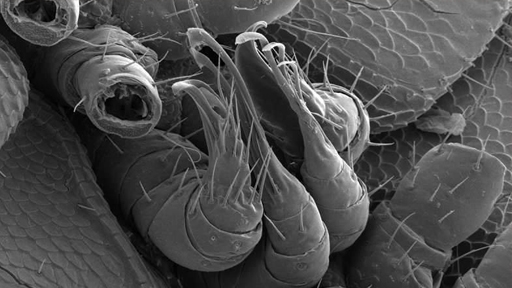 Photo: Paul Marek/Virginia Tech
Photo: Paul Marek/Virginia Tech
Biologists in California headed into the darkness on a hunt for undiscovered species, and they weren’t disappointed. Deep in the caves of Sequoia and Kings Canyon National Parks, they found more than 30 new types of invertebrates, including one very interesting little creature.
Illacme tobini, a millipede with an incredible 414 legs – that’s 207 pairs! – was scooped up in Sequoia’s Lange Cave back in 2006. Sometimes science moves slowly (even if millipedes don’t), and it took until this year for the biologists’ findings about the arthropod to appear in the journey ZooKeys.

Here’s what they know: Illacme tobini is about an inch and a half long and all white. After all, when you live in a super-dark cave, color is a waste of time. It’s got four modified legs called gonopods, which are essentially penises, and 200 orifices that could be poison glands.
That’s about all they know about this brand new critter, because so far they’ve only been able to find one. A 2009 expedition to find more millipedes came up empty. That doesn’t mean there’s not a big population in the California caves; just that scientists don’t yet know Illacme tobini well enough to know where to find it.

Annie Esperanza, Branch Chief of Physical Sciences at the park where the millipede was found, told reporters Illacme tobini could be the first in a long list of newly discovered species.
“Not a lot of people wander about in caves, just like not a lot of people go into the depths of the ocean,” Esperanza said. “In an era where we are data rich, that we still find something new should be a wake up call to think about all the other biodiversity out there that we don’t even know about.”

Thanks to the Federal Cave Protection Act of 1988, many of the caves in Sequoia and Kings Canyon National Parks are closed to the average visitor. That means there still may be a lot of undiscovered stuff going on in the dark.
Video:




